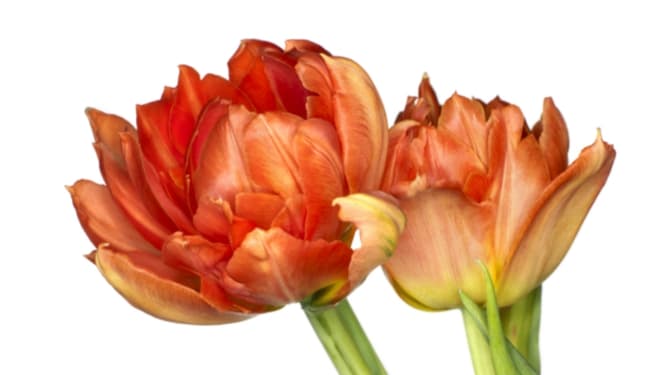Tulips are one of the most colorful flowers in nature but they can overgrow in your garden and stop blooming. The easiest way to fix an overcrowded flower bed is by transplanting tulips to another garden. Unfortunately these flowers are sensative and one wrong move can keep them the bulbs from flowering or even kill the plant.
Necessary Gear

Step by Step Guide
Before you start digging up the tulips in your garden here are a few tips to make replanting easier on you and your plants. Our step by step guide will walk you through removing the flowers from the ground and successfully replanting.
Step 1: Wait for the Foliage to Die
If your tulips are blooming you will have to wait. It is important that blooming tulips are left undisturbed so they can store enough energy to last the rest of the year. Wait for the foliage to begin to die before you try to replant tulips.
Step 2: Dig a Perimeter
Use a hand shovel to dig around the perimeter of each plant. Dig a few inches deeper than the root ball and try not to cut or damage while wiggling back and forth. If you damage too much of the root system the plant will die after transplanting.
Step 3: Scoop Under the Roots
Once the root ball has been loosen from the surrounding dirt scoop it out using a shovel and your hands. Be gentle and if you can’t get it out right away you might need to dig deeper with the shovel. Once the plant is out of the ground gently shake it to remove and remaining dirt from the roots.

Step 4: Prepare Garden
Dig a small hole for each tulip between 10 and 12″ deep. The soil should be loose and moist, make sure not to bury the plant too deep or to shallow or it could impact long term growth. Peat moss and mulch are also good ideas that go well in most gardens.
Step 5: Place in New Hole
Place each plant into the new hole and cover with dirt until even with the rest of the ground. Add a layer of shredded wood mulch for extra protection from wind, heavy rain and errosion.
Step 6: Add Water and Fertilizer
Finally, water the garden and apply a layer of low nitrogen fertilizer. This will give the plants a head start on adapting to their new soil.
When to Transplant Tulips
The best time of year to transplant or replant your tulips is the summer or fall. When the bulbs are blooming it is important that they are left undisturbed. If they are replanted while in bloom they will not be able to store enough food to last the winter and may kill the flower. Do not try to transplant during the spring if you want the bulbs to bloom that year.
Transplanting Potted Tulips
Moving tulips from the pot into a garden can be tough – but it is possible to do without damaging the flowering bulbs. The key is to go slowly so that the tulip bulb is distributed as little as possible. Try to move your transplant bulbs before they bloom or there is more risk of damaging the plant.
Frequently Asked Questions
Can you transplant tulips in the spring?
It is not recommended to try and transplant tulips during the spring months while tulips are blooming.
Can you dig up tulip bulbs and replant them?
Yes. Tulips should be replanted every few years to keep the plant healthy.
Should you dig up tulip bulbs after they bloom?
Yes. The best time to dig up tulips is after they are done blooming for the year.
